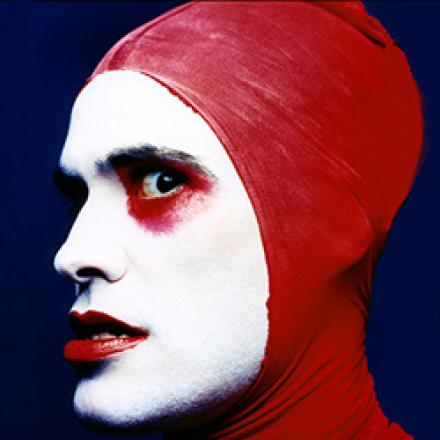
Earlier this year I travelled to Brussels to take part in a cultural project, Unpack The Arts, in which journalists from around Europe had the chance to see cxamples of ontemporary circus, talk about circus and write about circus at length. You can see articles from all the journalists on my trip here. It is an indication of how popular circus is on mainland Europe that in the weekend I was in Belgium there was not one but two circus festivals taking place.
I chose to write a piece about the use of humour in circus, reprinted below, drawing on the shows I had seen in Belgium and comparing them to shows I had seen over the years on the UK comedy circuit and, in particular Dr Brown, last year's winner of the Foster's Comedy Award. Clowning in clearly back on the agenda at the current Edinburgh Fringe with Red Bastard (pictured) creating a stir with his provocative, potty-mouthed conforntational brand of physical humour-meets-self help guide...
Circus in the 21st Century comes in many forms. From the traditional sawdust-sprinkled ring to the kind of stage performance that comes close to physical theatre or dance. One theme that runs through the best circus, wherever it takes place, however, is humour. From red-nosed clowns to sophisticated mime, making an audience laugh is an essential way of making a connection.
During my visit to two circus festivals in Belgium this thought occurred to me a number of times. Sometimes a performance would feel cold or distant. Lacking emotion. Then something funny would happen onstage to crack the tension. The sense of release could be heard in the laughs of the audience.
Claudio Stellato’s L’Autre at the Hors Pistes festival at Les Halles de Schaerbeek in Brussels was a particularly intriguing production. The tall, gaunt Stellato appeared on a bare, dark stage carrying a wooden cabinet on his back, like Atlas struggling to support the world. For the next hour this amazing performer squeezed into the box or squeezed into a wardrobe and delivered a type of physical clowning that is all too rare today. Stellato has Mr Bean-style funny bones but uses physical comedy to say so much more about the human condition.
There were touching, tender moments to L’Autre, but for the audience the most striking moments were the comedic ones. As Stellato tried to fit inside the small cabinet his long, gangly limbs were exposed. It was like trying to contain an octopus in a string bag. As one limb went in another popped out. Later in the performance his head, illuminated at the top of a high wardrobe, appeared to be disconnected from his body, moving independently and defying the laws of gravity.
The following morning our group met Stellato and his colleague Martin Firket. L’Autre is a show that they have been performing together for a number of years now and I assumed that it would be so well polished it would be the same every night. Yet they explained that the nuances of the performance, the small touches that make it funny, depend on the response of the audience. “We know within the first eight minutes if this will be a comedy,” says Stellato. On the night I saw it, the giggles flowed thick and fast from start to finish. On other nights they can perform in complete silence. Still a success, yet not a comedy.
For me this underlines how comedy and tragedy can be two sides of the same coin. Nudge a performance in one direction and you have something dark, push it in the other and you have light entertainment. A subtle shift in facial expression, tempo or angle of the body can drive the audience’s response in either direction. Stellato’s deadpan face can be sad or it can make him the comedic fall-guy. He decides.
Modern circus can be as complex or as simple as you want. It can play it straight or it can subvert the established artform. On the third day of my visit to Belgium I saw David Dimitri’s L’Homme Cirque in Tournai at the La Piste Aux Espoirs Festival. Incidentally, it says something about the popularity of circus in continental Europe that two circus festivals could take place at the same time within 90 minutes drive of each other. In the UK there are very few circus festivals. In fact circus often seems like a dirty word. Every January there is the London International Mime Festival, which Claudio Stellato has performed at. In any other country this might be called a circus festival. In London it is called mime.
Dimitri, a trim, compact veteran, was probably always going to be in the circus. His Swiss father was in the circus and his father’s father was in the circus too. As a young man Dimitri performed with Cirque du Soleil and New York’s Big Apple Circus. In his own show, however, Dimitri, who travels the world performing in a tent, has added a new twist to a very old formula. He does everything himself. When we meet, two hours before he is shot out of a cannon, he is just wheeling the cannon into position at the side of the ring.
It is the way that Dimitri works with wit that makes the show such fun. From the very start children were giggling at the way he tried to put each shoe on while perched like a flamingo on one leg. Dimitri’s performance was full of humour as he crammed a multitude of familiar acts into one hour. There was never a moment’s rest. He even had to turn his own music on and off. It was no surprise that he was soon sweating buckets. This must be how he stays so thin.





